A bead slide freely along a curved wire lying on a horizontal surface at constant speed as shown in Fig
a. Draw the vectors repesenting the force exerted by the wire on the bead at point A ,B and C
b. Suppose the bead in figure speeds up with constant tangential acceleration as it moves toward the right Draw the vector representing the force on the bead at point A B and C
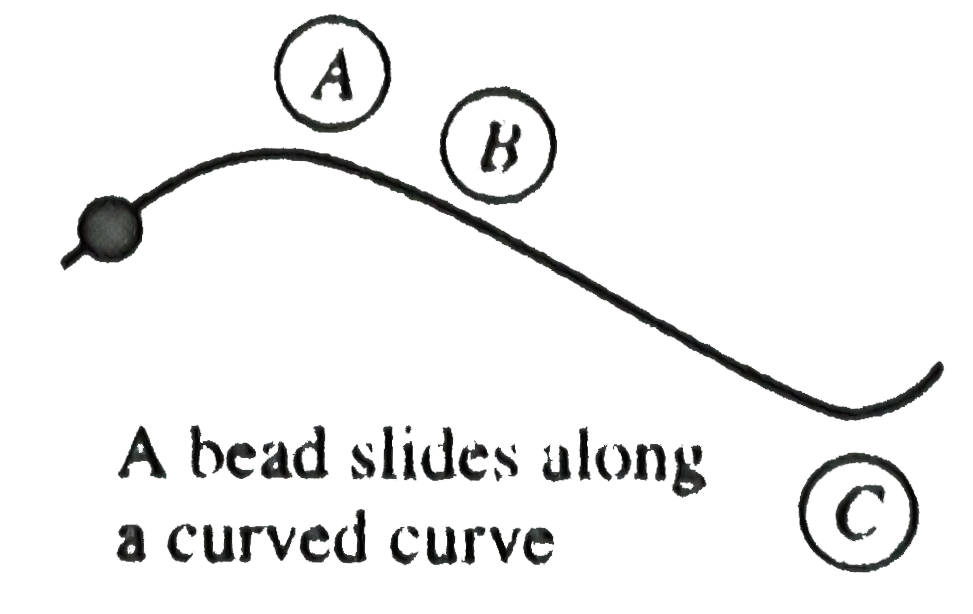
a. Because the speed is constant the only direction the force can have is that of the contripetal acceleration .The force is length at ( c) than at (A) because the radius at (c ) is smallar .There is no force at (B) because the wire is staight
b. In addition to the contripetal direction in (a), there are now tangential forces to provided the tangential acceleration . The tangential force is the same at all the there point because the tangential acceleration is constant

Topper's Solved these Questions
- NEWTON'S LAWS OF MOTION 2BOOK - CENGAGE PHYSICSCHAPTER - NEWTON'S LAWS OF MOTION 2EXERCISE - Subjective
21 Videos
- NEWTON'S LAWS OF MOTION 2BOOK - CENGAGE PHYSICSCHAPTER - NEWTON'S LAWS OF MOTION 2EXERCISE - Single Correct
87 Videos
- NEWTON'S LAWS OF MOTION 2BOOK - CENGAGE PHYSICSCHAPTER - NEWTON'S LAWS OF MOTION 2EXERCISE - Exercise 7.2
16 Videos
- NEWTON'S LAWS OF MOTION 1BOOK - CENGAGE PHYSICSCHAPTER - NEWTON'S LAWS OF MOTION 1EXERCISE - Integer
5 Videos
- PROPERTIES OF SOLIDS AND FLUIDSBOOK - CENGAGE PHYSICSCHAPTER - PROPERTIES OF SOLIDS AND FLUIDSEXERCISE - INTEGER_TYPE
2 Videos
Similar Questions
A bead C can move freely on a horizontal rod. The bead is connected by blocks B and D by a string as shown in the figure. IF the velocity of B is v. find the velocity of block D.
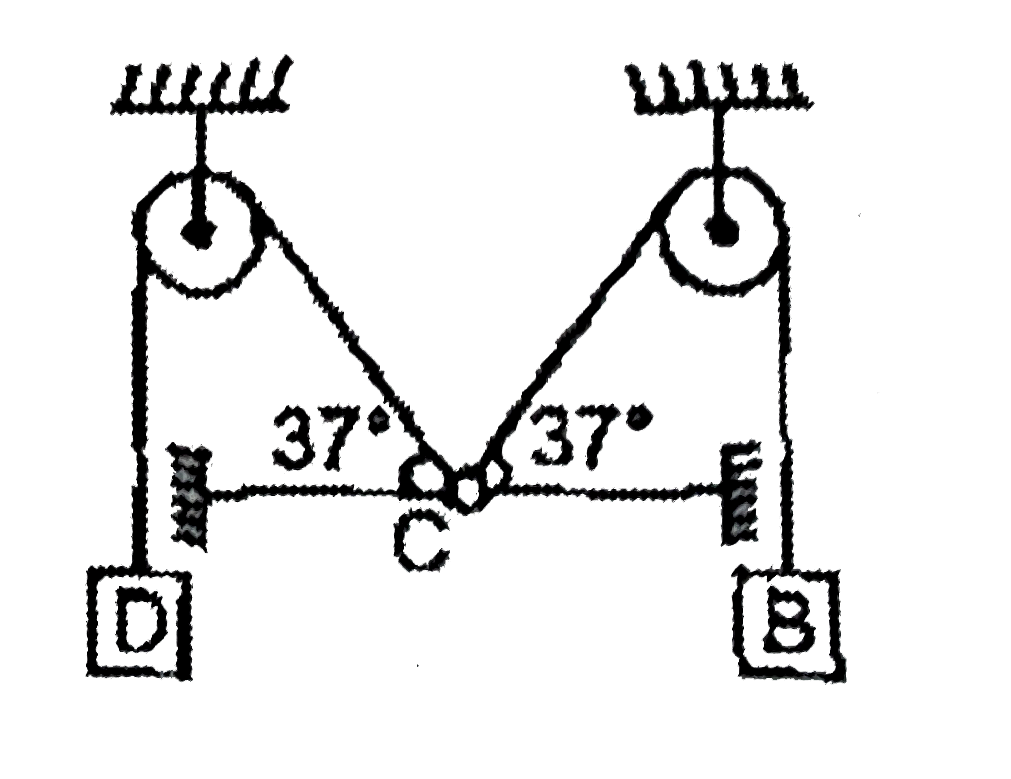
View SolutionA small, electrically charged bead can slide on a circular, frictionless, thin, insulating ring. Charge on the bead is Q and its mass is m . A small electric dipole, having dipole moment P is fixed at the centre of the circle with the dipole’s axis lying in the plane of the circle. Initially, the bead is held on the perpendicular bisector of the dipole (see fig.) Ignore gravity and answer the following questions.
(a) Write the speed of the bead when it reaches the position θ shown in the figure. (b) Find the normal force exerted by the ring on the bead at position θ. (c) How does the bead move after it is released? Where will the bead first stop after being released? (d) How would the bead move in the absence of the ring?
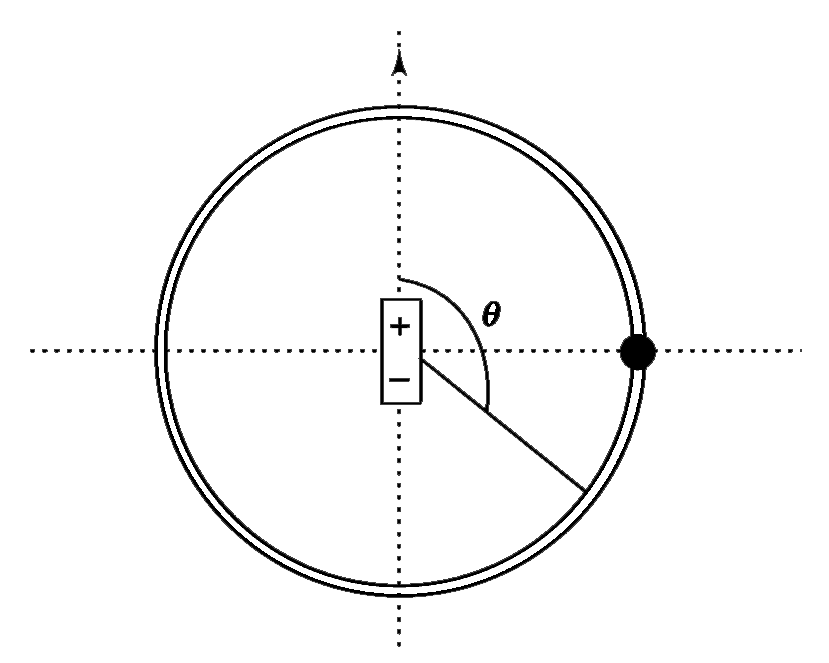
View Solution
Knowledge Check
IF a body moves with constant speed along a curved path,its tangential acceleration is
AzeroBis parallel to its velocityCperpendicular to its velocityDcan make any arbitrary angle with its velocityIn the above question 55 tangential acceleration of the bead just after it is released is ?
Ag2B34 gCg4D23 gIn the above problem, tangential acceleration of the bead just after it is released, is
Ag2B34gCg4D23g
A bead slides along a frictionless wire lying on a horizontal plane. It makes an anlge of 45∘ with x-axis as show in figure. In addition to any normal forces exerted by the wire, the bead is subject to an external force that depends on position according to formula.
→F=F0(xx0)2ˆi+F0(yy0)2ˆj
If the bead has speed v0 at the origin O, find its speed (in m/s) as it leaves the end P of wire Given data : F0=1N,x0=15m,y0=15m, mass of bead=2kg Initially kinetic energy of bead = 26 J
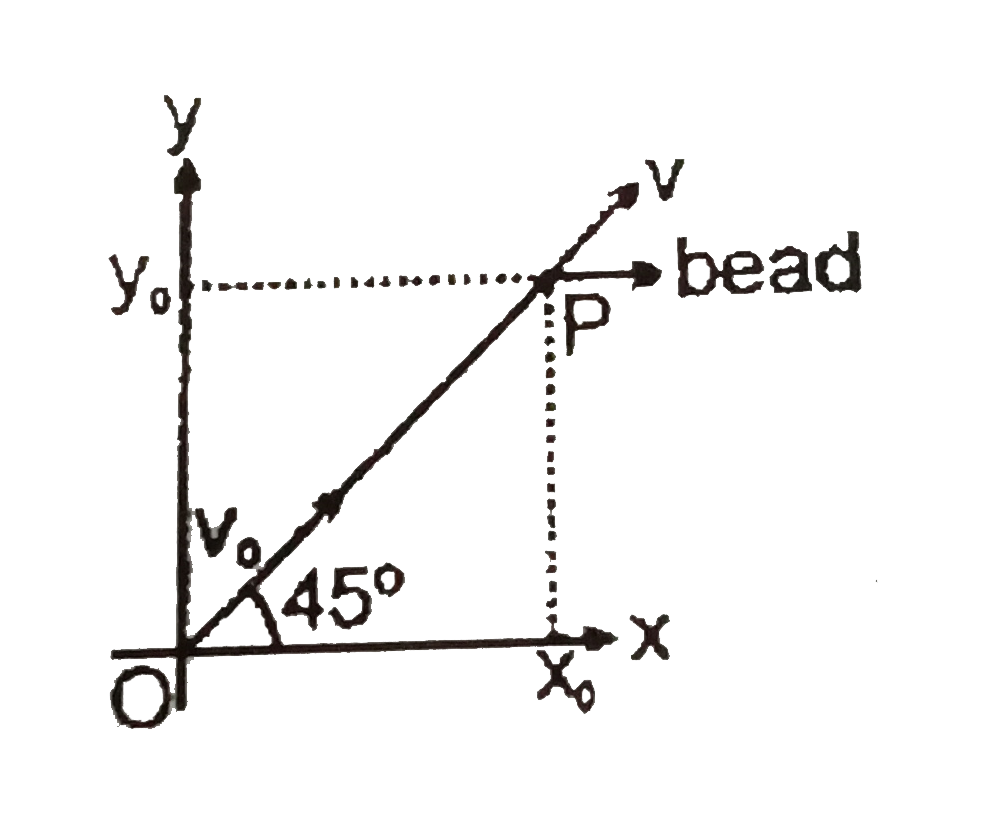
View SolutionA bead is arranged to move with constant speed around a loop that lies in a vetical plane. The magnitude of the net force on the bead is
View SolutionA bead is moving on a frictionless fixed circular wire of radius 0.8 m in horizontal plane with constant speed & there is no interaction force between bead & wire & it is also connected with string & spring .

View SolutionA bead of mass m is located on a parabolic wire with its axis vertical and vertex at the origin as shown in figure and whose equastion is x2=4ay. The wire frame is fixed and the bead is released from the point y=4a on the wire frame from rest. The tangential acceleration of the bead when it reaches the position given by y=a is
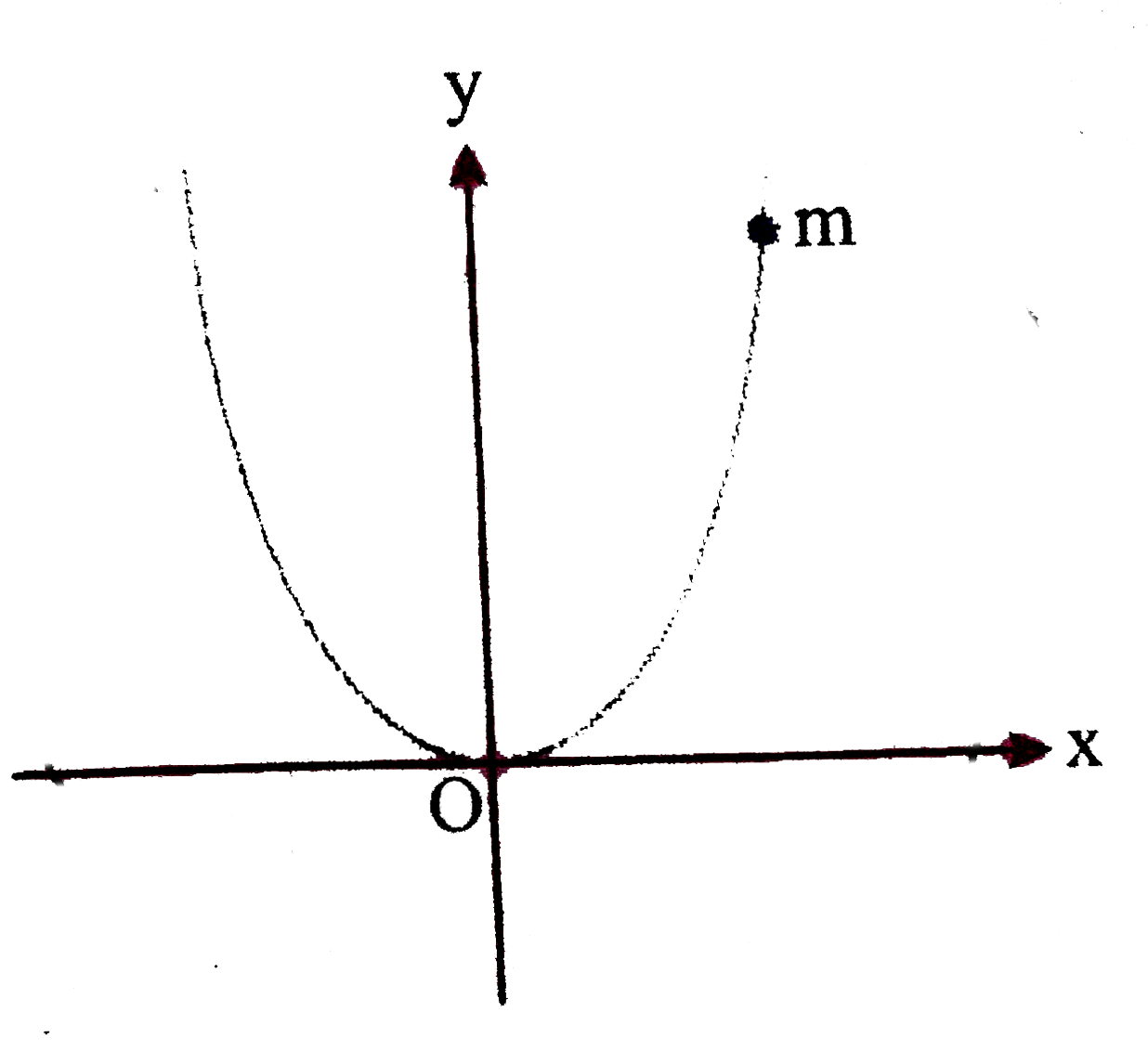
View SolutionA head slide without friction around a loop the (figure). The bead slide is released is from rest at a height h=3.50R. How large is the normal force on the bead at point (A) if its mass is 50g ?
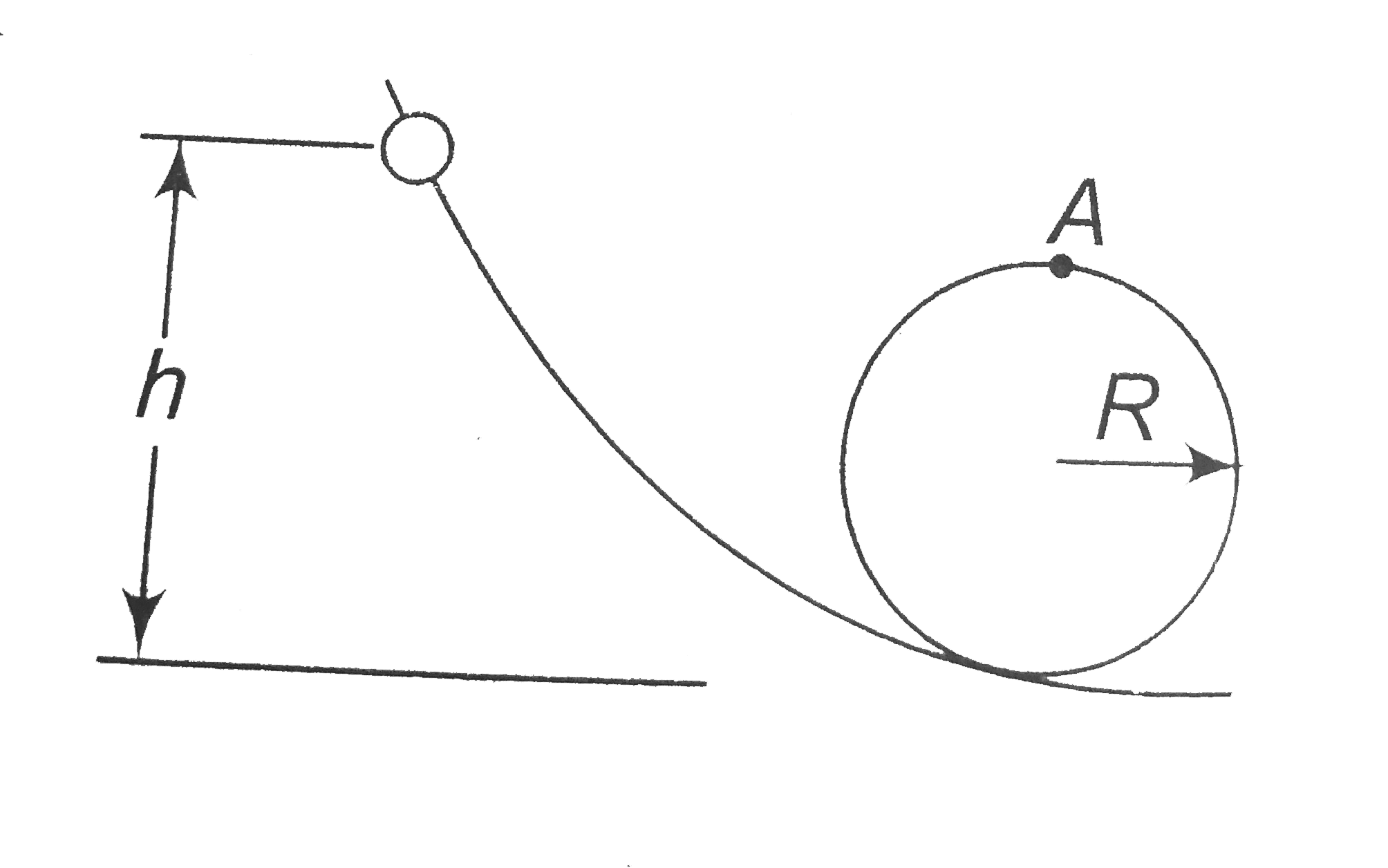
View Solution
